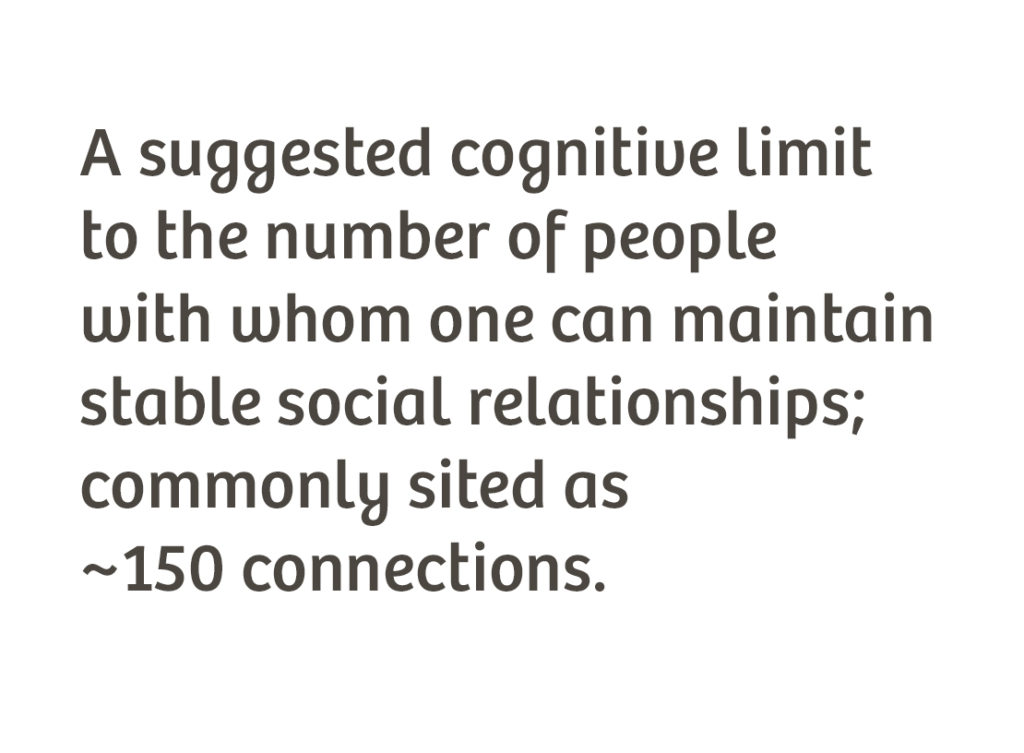What It Is:
Robin Dunbar is known for Dunbar’s number, a theoretical cognitive limit to the number of people with whom one can maintain stable social relationships. Dunbar’s number is often cited as around 150, representing the suggested limit to the number of individuals with whom a person can maintain meaningful relationships.
“Neocortex size as a constraint on group size in primates”. Journal of Human Evolution 22 (1992)
How to Use It:
Dunbar’s Number in Agile Coaching:
- Team Size Considerations:
- Consider Dunbar’s number when forming Agile software delivery teams. While the ideal team size may vary, keeping it within a manageable range allows for effective communication and collaboration.
- Scaling Agile:
- When scaling Agile to multiple teams, be mindful of the communication challenges that may arise as the number of team members increases. Consider strategies such as well-defined communication channels and regular cross-team collaboration to mitigate these challenges.
- Building a Cohesive Culture:
- Encourage team building and a cohesive team culture within the constraints of Dunbar’s number. Smaller teams often find it easier to build a shared understanding, camaraderie, and a sense of belonging.
- Effective Meetings:
- Consider Dunbar’s number when planning and conducting meetings. With smaller teams, it’s often easier to have more effective and engaging discussions, ensuring that everyone can actively participate.
Leveraging the insights from Dunbar’s number can help Agile coaches understand the dynamics of social relationships within teams. Applying these insights can contribute to effective team formation, communication strategies, and the overall success of Agile software delivery teams.
References:
- “How Many Friends Does One Person Need?” by Robin Dunbar:
- Dunbar’s book delves into the concept of Dunbar’s number and explores the social implications of the size of human social groups. Reading the book provides a comprehensive understanding of the theory.
- Academic Papers by Robin Dunbar:
- Explore academic papers written by Robin Dunbar on the topic of social relationships and group sizes. These papers offer in-depth insights into the research behind Dunbar’s number.
- Robin Dunbar (1992). “Neocortex size as a constraint on group size in primates”. Journal of Human Evolution. 22
Visit the Agile Coach’s Toolkit for more definitions, models, theorems and stuff.

